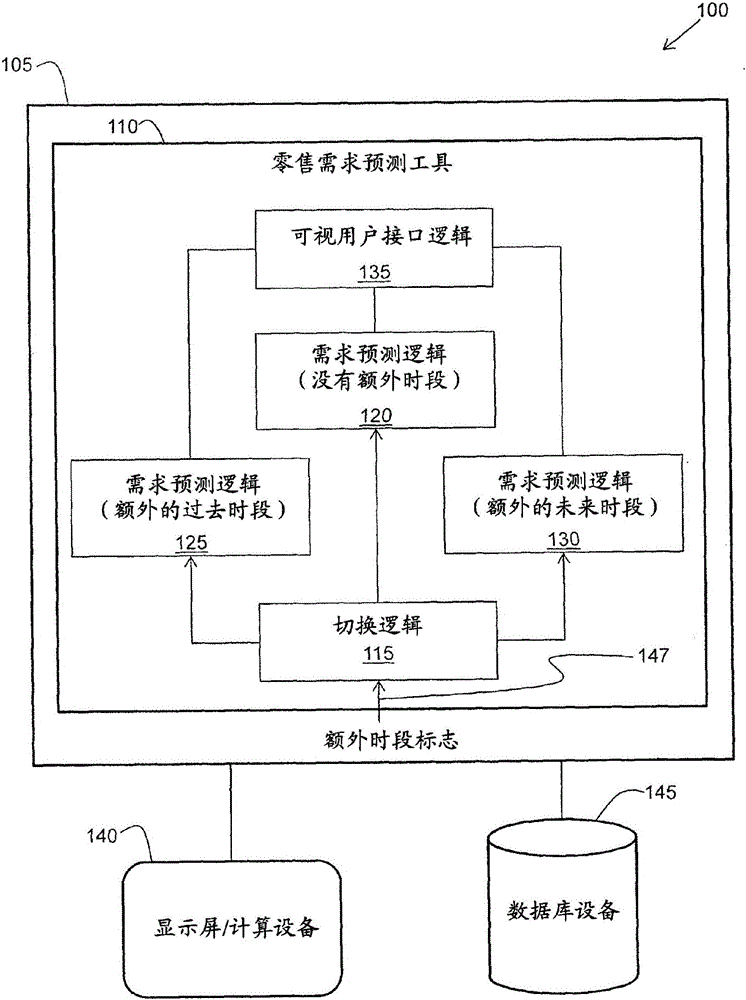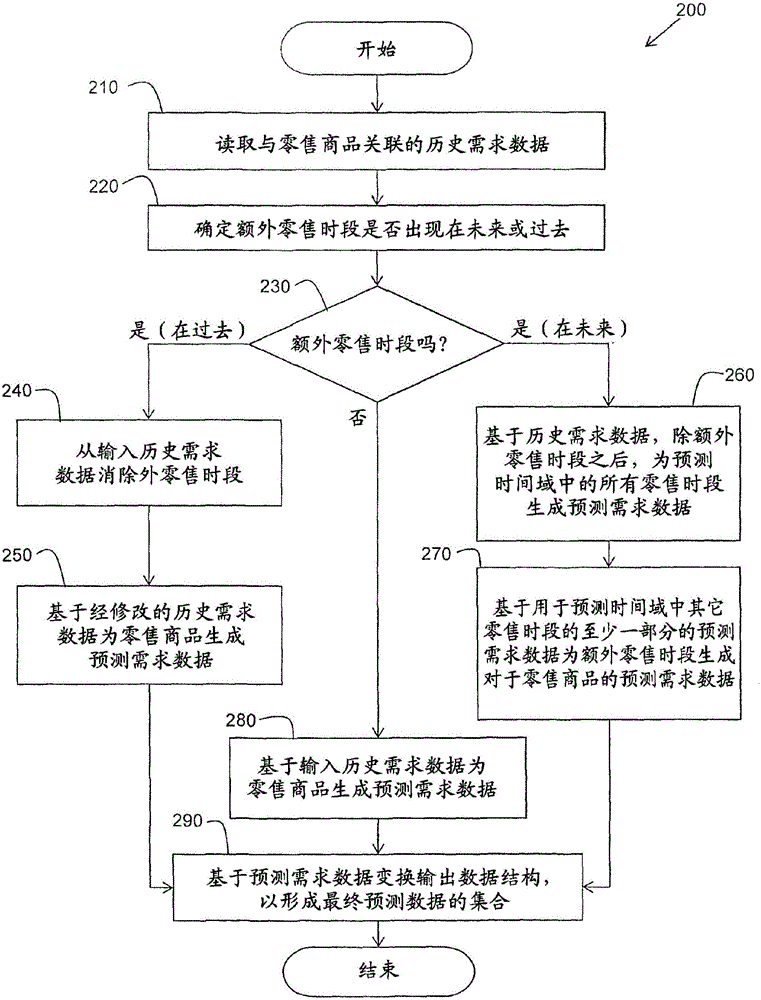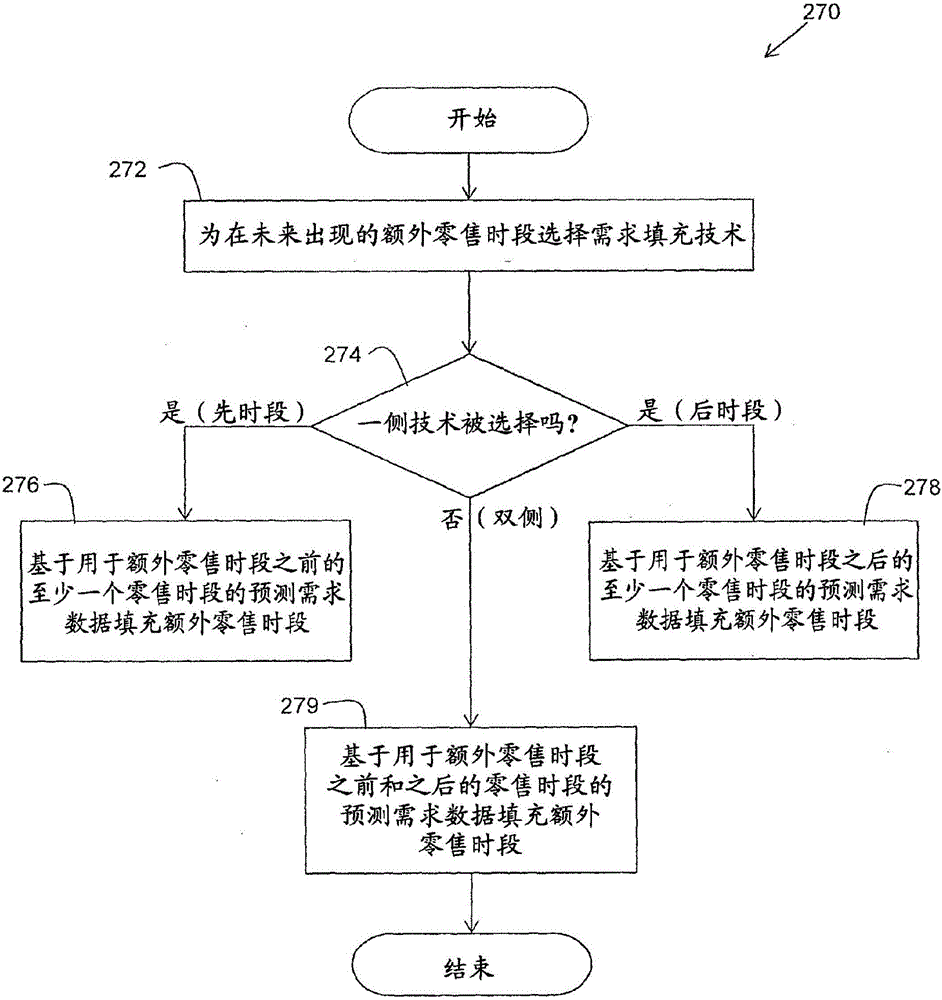System and method for managing extra calendar periods in retail
A time period and additional technology, applied in data processing applications, marketing, forecasting, etc., can solve problems such as disrupting workflow and time-consuming
- Summary
- Abstract
- Description
- Claims
- Application Information
AI Technical Summary
Problems solved by technology
Method used
Image
Examples
Embodiment Construction
[0024] The following terms are used herein with respect to various embodiments.
[0025] As used herein, the term "retail calendar" refers to a calendar used by retailers that is organized to consider periods (e.g., quarters) of a retail year such that subsequent years may correspond to the same periods, This provides an invaluable predictive tool for management. For example, a retail calendar year may have 52 retail periods, each corresponding to a 7-day week. For example, a retail calendar is maintained in computerized form in a data structure that is part of a retail calendar computer application.
[0026] As used herein, the term "retail period" refers to the unit increment of time retailers use to correlate a seasonal retail period from one year in the retail calendar to the next for planning and forecasting purposes (e.g., 7 days of the week).
[0027] As used herein, the term "extra retail period" refers to a unit increment of extra time (eg, week 53) that is occasio...
PUM
 Login to View More
Login to View More Abstract
Description
Claims
Application Information
 Login to View More
Login to View More - R&D
- Intellectual Property
- Life Sciences
- Materials
- Tech Scout
- Unparalleled Data Quality
- Higher Quality Content
- 60% Fewer Hallucinations
Browse by: Latest US Patents, China's latest patents, Technical Efficacy Thesaurus, Application Domain, Technology Topic, Popular Technical Reports.
© 2025 PatSnap. All rights reserved.Legal|Privacy policy|Modern Slavery Act Transparency Statement|Sitemap|About US| Contact US: help@patsnap.com



